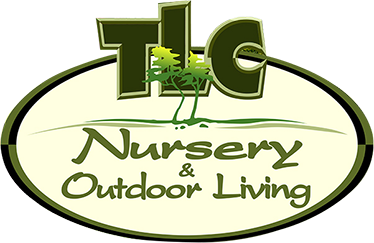The lawn of your home sets a tone for visitors to your home or business. When someone pulls up and sees your lawn, be it a small patch or several acres, they will form an opinion. You can tell if a person has a certain level of pride about their property. This isn’t always fair, since life can take up all your time, and while you might really care about what people see when they are driving up the lane to your home or business, you might not have time, the equipment, or the know-how to keep your lawn looking great all through the blazing southeastern Kansas summers. But you don’t need to know everything about lawn care to have a great looking lawn all summer; you only need to know who to call. When you are looking for lawn care in the Independence area, there is one name to know: TLC Nursery & Outdoor Living. We are the turf, and lawn experts call. We provide expert lawn care for large areas and small, and for all types of grass.
If you call us to care for your lawn, there is no need to enter the world of lawn care, but if you want to wrap your mind around what it is we do, we will go over some lawn care basics.
What Types of Grass Do Well Here?
We live in an unusual location, where we have blazing hot summers and very cold winters. The cold temperatures make this area welcoming to grasses such as fescues, bluegrass and rye grasses, but these grasses struggle during the hottest times of the season. These cool-season grasses thrive when temperatures are between 60-70 °F.
During these times the fescue turns brown, but it’s not the daytime heat that puts the grass through its paces, it’s the night time heat. Fescues need cool nighttime temperatures to recover from the daytime heat, and in those weeks of the summer when the heat is unrelenting, the grass goldens to a brown and turns into the familiar crispy golden lawn we know. These cool season grasses do great in the spring and fall, but for summer, they require overseeding. This means we will come out can provide rescue efforts of planting new seed where the lawn hasn’t gotten burns. There is also the choice of warm season grasses including, bermudagrass, zoysia, and St Augustine. These grasses thrive between 80-95 °F and turn brown when temperatures get cooler.
How Low Should Grass Be Cut?
- In general grasses such as bluegrass, fescue, and rye should be but to the height of 2-3 tall and Bermuda grass is much shorter at ¾ to 1 inch tall.
If you cut your lawn too short, you may end up with areas that are bald. This is why cutting your lawn too short is called scalping. This often happens at elevation changes. - One handy rule of thumb is to cut slopes one level higher than the rest of the lawn.
- The height of your lawn plays a major role in is water need. Most lawns require about an inch of water a week, but if you cut your lawn too short, more of the water will evaporate, and you’ll end up water extra.
- For the most efficient water habits, keep your lawn on the tall side.
Lawn Watering Basics
As we covered above, lawns need about an inch of water a week, but this one inch needs to be applied correctly.
- It’s best to water in the early morning hours.
- If you water late at night, mildew and diseases can gain a foothold in your lawn.
- If you water in the midday, the water droplets will act as magnifying glasses for the sunlight and burn the blades of grass.
- It’s best to give your lawn one long watering, rather than several short ones. This allows the water to go deep into the soil and reach the deeper roots.
- When you water the lawn so that it is wet to a depth of 4-6 inches, evaporation will also be minimized.
There are many steps to maintaining a healthy lawn including soil testing, aeration and proper nutrition and we’ll cover these topics in our next blog. Be sure to check back to learn about lawn care. The easiest way to get a green lawn all season long is to call TLC Nursery & Outdoor Living and sign up for our lawn care services. Call today and enjoy a green lawn all summer long!



